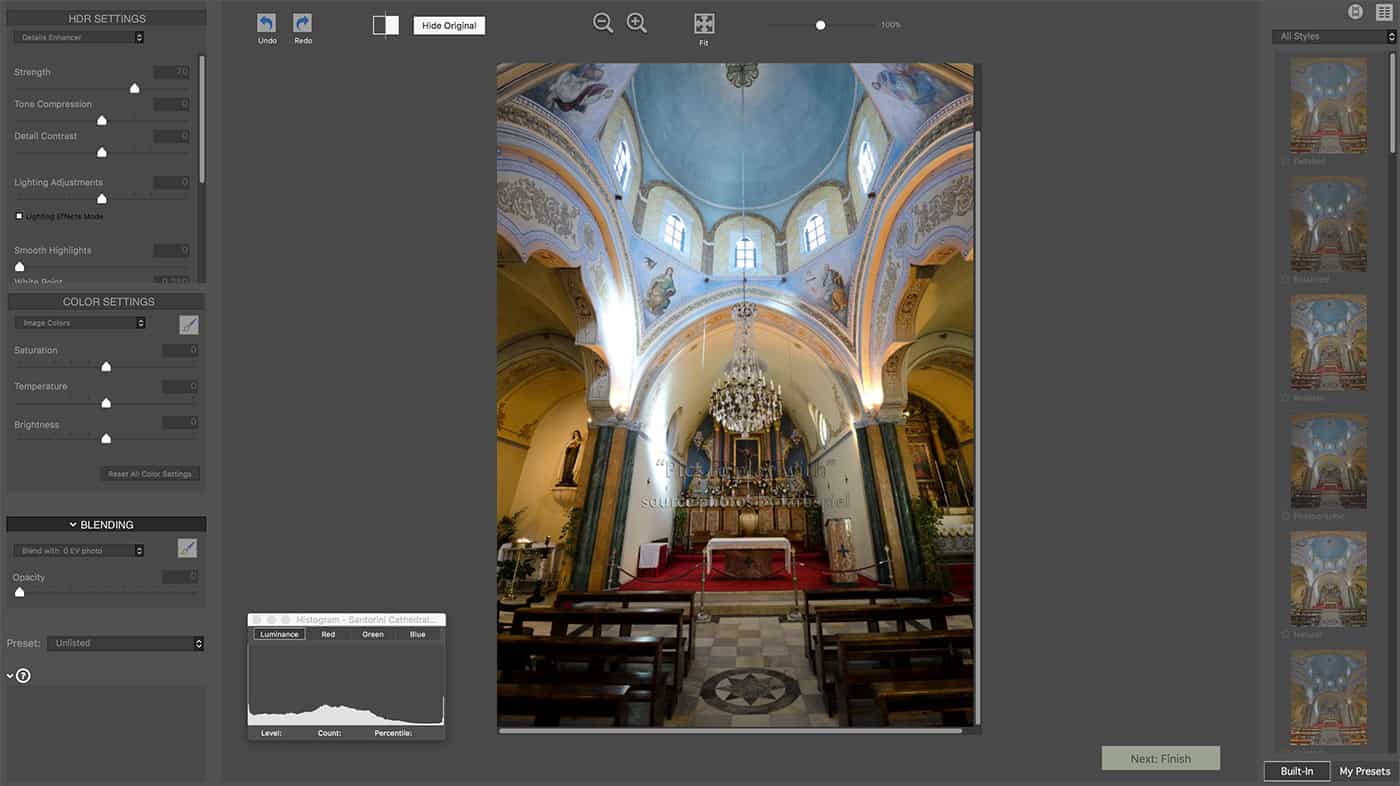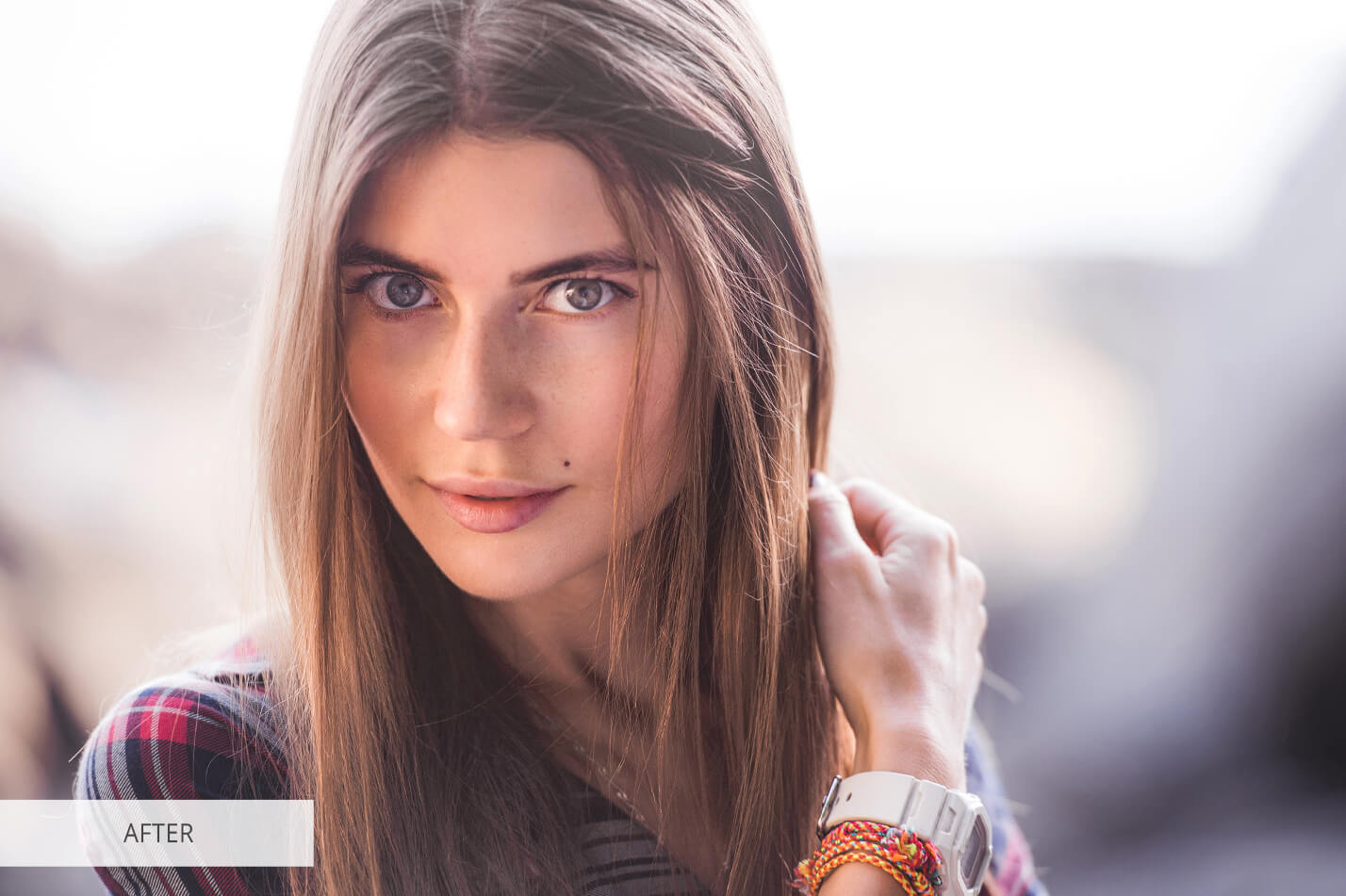

It has four different methods or styles of creating an HDR file. Photomatix Pro is a heavy lifter in the world of HDR conversions. Photomatix Pro presets may be viewed all at once or by choosing a category. The right pointing one moves back to the one before. The one pointing left is the go to previous settings. Not sure? There are two curved blue arrows under the controls. While the slider names might be intimidating, thanks to the “what-it-does” window, they are not as mysterious as they could be. Each slider has a clarification of its function waiting for you. The box at the bottom explains what it does. In the screenshot above, the cursor is over the Saturation control. While this previously mentioned plethora of controls looks scary at first glance each one has an explanation of what it does at the bottom of the control sidebar. Great! It’s time to explore by playing with sliders. On the other hand, you think it’s a good starting place. The left sidebar shows the style of HDR conversion and its associated controls along with the setting for the preset. The main window updates for you to review what the preset does. The sidebar on the right edge of the Photomatix Pro window shows preset previews for the HDR photo displayed in the main area.įind a preset that intrigues you then click it. That’s where the presets that come with Photomatix Pro enter the picture.

The problem for anyone starting out is, well…. The resulting file is the basis for all of the rest of the work that can be done in Photomatix Pro. When these choices are made, click Align & Merge to HDR There are settings to help if you hand held the camera instead of using a tripod. Tell Photomatix how you made the brackets.Leave Show 32-bit unprocessed image unchecked. Choose the files by clicking OK in this dialog.

#Photomatix pro presets full series
The graphic that follows shows the series of dialogs to navigate to merge photos into an HDR file. What’s great about this method is that the changes made in the RAW processor appear in the bracketed TIFs.

If your RAW format is not supported, use your favorite RAW processor to make a series of 16-bit TIF files at the native camera resolution. Photomatix Pro 5 can open RAW photos from most cameras from Canon, Fuji, Nikon, Olympus, Panasonic and many more. The first question that comes to mind is “Where in the world do I start?” The answer? Presets. Opening a bracket set in Photomatix Proīefore jumping into presets, here’s a quick start for opening a series of bracketed photos.Once Photomatix Pro 5 opens a set of bracketed images, especially in Details Enhancer or Tone Compressor, the choices of controls is kind of intimidating. I made a quick set of 3 bracketed exposures at 2 stop brackets to use Photomatix Pro. I noticed a pair of children with their father standing in front of the remains of a favorite place to eat. I saw this one was under what looked more like destruction rather than renovation. Periodically the company remodels one of their restaurants. The photo above is the normal exposure of a Waffle House near my studio.


 0 kommentar(er)
0 kommentar(er)
